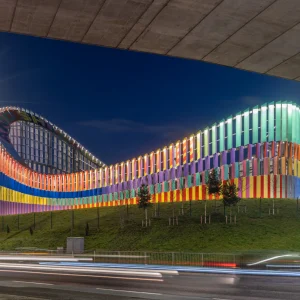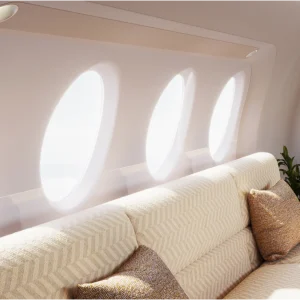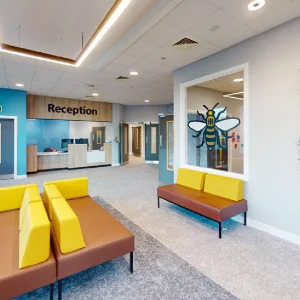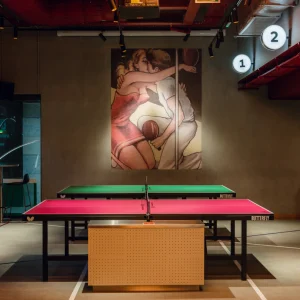Designed by London-based practice Hopkins Architects in association with Connecticut-based Centerbrook Architects, the new $33.5 million, 5,400 square meter home for F&ES is expected to achieve Leadership in Energy and Environmental Design (LEED)-Platinum certification.
The hall, located in the Science Hill area of the university, is named for the family of benefactor and Yale College alumnus Richard Kroon. With its high barrel-vaulted gable ends, simple lines, and curved rooftop, Kroon displays a modernist blend of cathedral nave and Connecticut barn.
Construction has made use of natural materials, such as Briar Hill Stone and red oak from the university’s own sustainably harvested forests in order to create a building that is warm in character.
The building consumes half the energy of a conventional contemporary equivalent, reducing greenhouse gas emissions by 62%, and generates 26% of its electricity needs from a 100kW rooftop photovoltaic array. Kroon Hall achieves its remarkable energy savings from a host of design elements and technical strategies molded to fit the building’s New England weather and climate.
The majority of the building’s heating and cooling requirements are met by its east-west orientation. The tall thin shape of the building also adds to its energy saving credentials. The lowest floor is set into a hillside, with only its south side exposed, providing thermal insulation, minimizing northern exposure, and increasing the amount of natural light that enters the building from adjacent courtyards.
The long south facade maximizes solar gain during winter, and Douglas fir louvers covering glass facades on the east and west ends eliminate unwanted heat and glare. The building’s shape, combined with the glass facades, enables daylight to provide much of the interior’s illumination. Light and occupancy sensors dim artificial lighting when it is not needed.
Half of Kroon Hall’s red oak paneling came from the 7,840-acre Yale-Myers Forest in northern Connecticut. Kroon’s pale yellow exterior, composed of sandstone from Ohio, complements the other surrounding Yale buildings.
A 100-kilowatt rooftop array of photovoltaic panels will provide about 25% of the electricity for the building. Four solar panels embedded in the southern facade fulfills the hot water requirement. Button-sized red or green lights installed through out the building indicate if conditions outside permit the windows to be opened.
A rainwater-harvesting system channels water from the roof and grounds to a garden in the south courtyard. The courtyard features aquatic plants which filter out sediment and contaminants. The grey water, held in underground storage tanks, is then pumped back into Kroon for flushing toilets and is used for irrigation.
Water-saving measures include low-flow aerating taps and showers (encouraging bicycle use), dual-flush toilets and waterless urinals. The grey water from basins joins rainwater from the roof in a 91,000 liter underground tank. From here, it is released into a pond in the south court where it is filtrated by a variety of aquatic plants, removing nitrogen, phosphates and fine particles.
A notable design element of the facility is the integration of plenty of open spaces. The building’s north and south courtyards add greatly to Kroon Hall’s attractive environment for work and study. The south courtyard is a raised platform, with a green roof of soil a foot deep.
All common spaces are arranged as a single suite under the unifying embrace of the vaulted roof. The roof is supported by 21 arched frames of laminated Douglas fir, which is lined in red oak. Hopkins Architects’s design of the Kroon Hall is an instance of the use of heavy traditional materials in a traditional manner with a modernist rigor and direct expression of structure and construction.
Kroon Hall is designed as a truly sustainable building, showcasing the latest developments in green building technology, a healthy and supportive environment for work and study, and a beautiful building that actively connects students, faculty, staff, and visitors with the natural world.





